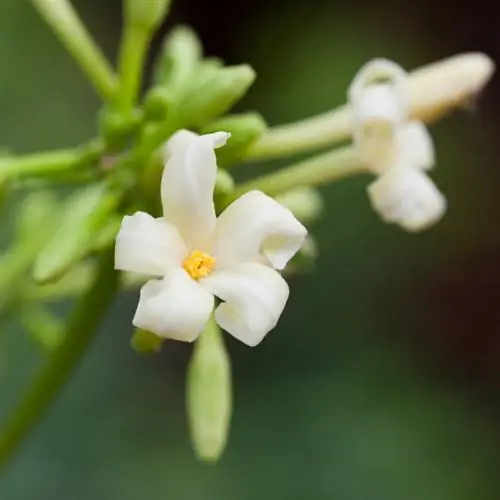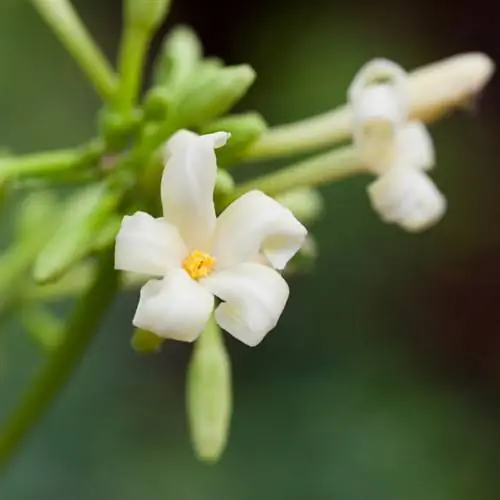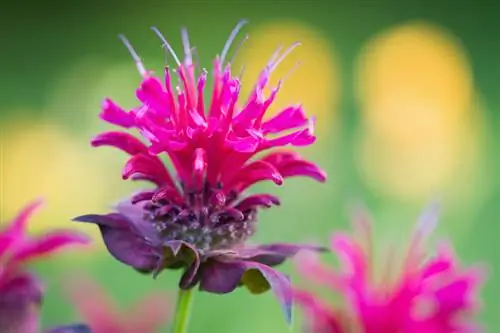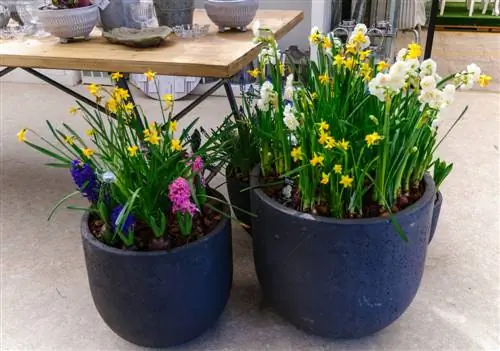- Author admin [email protected].
- Public 2023-12-16 16:46.
- Last modified 2025-01-23 11:20.
Papaya plants have a tree-like habit, but are not botanically referred to as a shrub or a tree. The plant from the melon family (Caricaceae) probably originally comes from Mexico and produces its first flowers and fruits just one year after sowing.

What does a papaya flower look like and how is fertilization done?
The papaya flower is a small, star-shaped flower in various cream-colored tones. It appears after about 10 to 14 months and grows on the scar of shed leaves on the “trunk” of the plant. Papaya plants can be monoecious or dioecious, with fertilization in dioecious specimens requiring one male and one female plant.
Special features of the papaya flower
Of the different types of papaya, the papaya flowers also look quite different. These can also have different shades of cream colors, from bright white to yellow tones. The mainly cultivated species Carica papaya bears small flowers with a star-shaped petal arrangement, the shape of which is reminiscent of a spinning wind turbine. What all papaya species have in common is the arrangement of the flowers on the “stem” of the plant, each on the leaf scars of leaves that have already been shed.
From papaya flowers to fruits
If you let purchased papayas ripen sufficiently at home, you can grow your own from the seeds and later plant them in a pot. After around 10 to 14 months, these young plants can bear their first flowers and thus also fruit. Due to the lack of winter hardiness in this country, the following types of cultivation are possible:
- as a houseplant indoors or in winter gardens
- as a potted plant on the balcony
- as a pot plant on the terrace and in the garden
Tips & Tricks
There are both monoecious and dioecious papaya species. In monoecious species, self-fertilization via wind and insects is sometimes possible; in dioecious specimens, one female and one male plant are necessary for fertilization.






